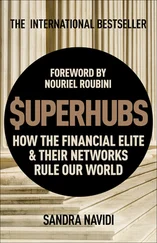As the lodges were founded by groups of individuals rather than by any organised system of delegation or procuracy, they evolved markedly different styles. In France, Freemasonry was generally social and often frivolous. In countries such as Poland and Russia it had more to do with aping French fashions than anything else. But in Germany it was taken very seriously. It reflected and partially overlapped religious trends seeking a return to a ‘purer’ form of Christianity and genuinely aspired to some kind of spirituality.
In 1776 Adam Weishaupt, Professor of Canon Law at the University of Ingolstadt in Bavaria, started a student society, the Order of Perfectibles. There was nothing remarkable in this, as German universities pullulated with such confraternities. In 1778 he changed its name to the Order of the Illuminati, and introduced grades, along with an elaborate system of signs and passwords. There were also synonyms for people and places: Bavaria was ‘Greece’, Munich ‘Athens’ and Weishaupt himself ‘Spartacus’.
In 1780 a new recruit, Baron Adolf Franz von Knigge, alias ‘Philo’, began to transform the Order, imposing on it his own doctrine that all political states were unnatural and perverse creations which should be swept away. They should be replaced by a miasma of mutual respect and love which would bring about universal happiness. This supposed panacea to the world’s ills attracted large numbers of supporters, and seeped into the Masonic network of Germany, and thence into those of Austria, Bohemia, Hungary, northern Italy and even France. Adepts included Goethe, Schiller, Mozart, Herder and many other notables.
In 1785 the Elector of Bavaria suppressed the Order, thereby according it a notoriety and validation it hardly deserved. Spine-chilling tales began to circulate as to its occult aims. An anonymous book entitled Essai sur la secte des Illuminés , published in Paris on the eve of the Revolution, traced the origins of the sect to the Freemasons and dwelt with evident glee on its induction rituals and ordeals, describing how occult symbols were painted on the body of the novice in his own blood, and so on. It revealed that the Illuminati had a castle outside Paris with underground oubliettes into which those who had betrayed its secrets were thrown and forgotten. The author affirmed that the sect ‘has conceived the plan of taking over minds, and of conquering not kingdoms, not provinces, but the human spirit’, with the ultimate aim of destroying all thrones and governments, and then society itself. It operated through a network of circles in every country, each controlling a cluster of subsidiary circles, which he listed meticulously, giving the impression that the whole of Europe was comprehensively covered.10
This chimed with a fashion for the occult and a fascination with ancient Orphic and Egyptian cults, with Eleusinian and Rosicrucian ‘mysteries’, and with secret societies of every kind, whose most famous expression is Mozart’s Magic Flute . In Germany it gave rise to a literary genre, the Bundesroman , to which Schiller, Jean-Paul Richter and Goethe contributed works. Its most commercially successful product was Carl Grosse’s novel Der Genius (1791–95), whose aristocratic young protagonist’s picaresque adventures include not only much curious sexual activity but also involvement in an order which compels him to assassinate the King of Spain. Such books helped to propagate a belief in the ubiquity and omnipotence of the secret societies allegedly operating in the shadows, and a shelf of supposedly more factual publications established a connection between them and politics, confirmed in the minds of many by the fact that a majority of the prime movers of the French Revolution had been Freemasons. Some asserted that the ideological powerhouse of the Revolution, the Club des Jacobins , named after the former Dominican convent they met in, was actually an offshoot of Freemasonry. ‘The political committees that gave rise to the Jacobin Club had their origins in Illuminism which started in Germany, and, far from having been snuffed out, they are operating underground and have become all the more dangerous,’ wrote Leopold Alois Hoffmann. He pointed out that one of the leading Illuminati, Johann Christoph Bode, had visited Paris two years before the outbreak of the Revolution to confer with French Freemasons, and that the prominent revolutionary the marquis de Mirabeau had visited Berlin shortly before the fall of the Bastille.11
When, on 16 March 1792, King Gustavus III of Sweden was shot at a masked ball, it was evident to many all over Europe who was behind it. Later that year, when the Duke of Brunswick, a former Freemason who commanded the royalist forces invading France to crush the Revolution, drew back after the inconclusive Battle of Valmy, leaving the revolutionary army triumphant, it was again obvious that he had followed an occult order from above. A spate of sensationalist ‘revelation’ literature spoke of dark arts, secrets, spells and poison, and of their involvement in the unexpected deaths of various kings. The writers defended themselves against the charge of vagueness by hinting that their own lives were at risk, fuelling the growing myth of the ‘sect’s’ omnipresence and omnipotence. While many of the books and pamphlets convinced only the converted, a wider readership was persuaded by an authoritative and seminal work by the former Jesuit Abbé Augustin Barruel.12
Barruel had been combating the Enlightenment in print since 1781, and kept up his critique in the first years of the Revolution, which he saw as God’s punishment on the French for having tolerated and embraced its false philosophy. In 1792 he fled to England, where he published his two-volume Mémoires pour servir à l’histoire du Jacobinisme . It was reprinted six times in the space of a year and translated into all the major European languages, and continued in print for decades. Barruel’s writing has a tone of authority that brooks no argument, and his assertions, extravagant and improbable as they might appear, carried conviction.
In the opening sentence, he declares that the French Revolution was the fruit of a vast conspiracy carried out by a sect which had latterly taken the name of Jacobins, whose aim was to overthrow all existing thrones and altars and unleash anarchy. According to him, it consisted of 300,000 active leaders manipulating a further two million. ‘In this French Revolution, everything, including its most frightful crimes, was foreseen, premeditated, calculated, resolved, decreed,’ he affirmed, ‘everything was the consequence of the most profound perfidy, since everything was prepared and brought about by men who alone had knowledge of the conspiracy long planned in the secret societies, and who knew how to choose and bring on circumstances favourable to their plans.’13
Barruel believed it all began in the late 1720s, with Voltaire, who enlisted the support of Frederick II of Prussia and recruited D’Alembert and Diderot, who compiled the Encyclopédie , which under the guise of scientific knowledge and reason undermined religion, social hierarchy and most human institutions. The next step was the dissolution of the Jesuits, brought about by the manipulation of public opinion and statesmen. According to Barruel, the benign Freemasons interested in human welfare were the ‘useful idiots’ who helped destabilise society by creating spurious hierarchies and undermining existing institutions, above all the Church, with their pseudo-religious foolery. The Illuminati were more focused, and Weishaupt’s philosophy more dangerous. Barruel defined it thus: ‘Equality and liberty are the essential rights which man, in his original and primitive state, received from nature; the first blow to equality was dealt by property; the first attack on liberty by political society and governments; the only bases for both property and governments are the religious and civil laws; thus in order to re-establish man in his primitive rights of equality and liberty, one has to begin by destroying religion and civil society, and finish by abolishing property.’14
Читать дальше












